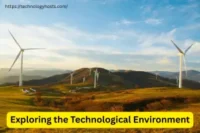What Gadgets Did Thomas Edison Invent? Discover His Top
Published: 02 Feb 2025
Thomas Edison didn’t just invent the light bulb – he redefined the way we live, work, and communicate. His name is synonymous with innovation, and his groundbreaking inventions have left a lasting legacy. Curious about the gadgets he created that changed the course of history?
In this article, we’ll dive into the world of Edison’s most famous inventions and uncover how they changed the way we interact with technology today.
Who Was Thomas?
Thomas Edison, often called the “Wizard of Menlo Park,” was a renowned American inventor, scientist, and businessman. Born in 1847 in Milan, Ohio, Edison is best known for his groundbreaking work in electricity and sound technology. Although he didn’t finish formal schooling, his curious mind and relentless drive led him to develop over 1,000 patents during his career. His most notable achievements include the invention of the electric light bulb, the phonograph, and motion picture technology. Edison’s work fundamentally changed how people lived, worked, and communicated, making him one of the most influential inventors in history. Gadgets Hindi Meaning
The Most Famous Gadgets Invented by Thomas

Gadget 1: The Electric Light Bulb
Thomas Edison’s invention of the practical electric light bulb is perhaps his most famous contribution. Although he wasn’t the first to create an incandescent light, his version was the first commercially viable one. Edison improved on earlier designs by creating a filament that could burn longer, making electric lighting practical for everyday use.
How It Works:
The electric light bulb works by passing an electric current through a filament, which then heats up and produces light. Edison’s innovation was in making this process safe and efficient enough to be used in homes and businesses.
Impact:
The light bulb revolutionized the way we live by extending the productive hours of the day and improving safety by replacing dangerous gas lighting. It is considered one of the most important inventions of the 19th century, shaping the modern world as we know it today.
Gadget 2: The Motion Picture Camera
Thomas Edison didn’t just stop at sound technology; he also had a profound impact on visual entertainment. The motion picture camera, developed by Edison in the late 19th century, was the first camera capable of capturing moving images on film. This invention marked the beginning of modern cinema and the entertainment industry as we know it today.
How It Works:
The motion picture camera works by capturing a series of still images in rapid succession, typically at 24 frames per second. These frames are then played back in sequence, creating the illusion of continuous motion. Edison’s invention used a celluloid film strip that passed through the camera’s lens and was exposed to light, imprinting the images. When the film was developed and projected, it created moving images for the first time in history. What is an Alexa Gadget?
Impact:
The motion picture camera was a pivotal invention in the world of entertainment. It not only revolutionized the film industry but also introduced the concept of moving pictures, which is now an integral part of global culture. Edison’s camera laid the foundation for movies, television, and digital video, industries that continue to shape our media and communication today. This invention ultimately led to the creation of Hollywood and the entertainment world we know today.
Gadget 3: The Phonograph
Before the phonograph, there was no way to record and play back sound. Edison’s invention in 1877 marked a significant breakthrough in sound technology. The phonograph was the first device capable of both recording and reproducing sound, enabling people to listen to music, speeches, and other audio recordings in a way that was never possible before.
How It Works:
The phonograph uses a needle to etch grooves onto a rotating cylinder or disc. When someone speaks or plays music into a diaphragm connected to the needle, the sound vibrations cause the needle to move, creating a series of grooves. To play back the recording, the needle follows the grooves, vibrating in response to the indentations, and the sound is reproduced through a speaker.
Edison’s phonograph was a mechanical device that used wax cylinders to record sound. While later versions of the phonograph evolved into record players and eventually digital music players, Edison’s invention laid the groundwork for the entire music industry.
How Thomas Edison’s Inventions Changed the World
Thomas Edison didn’t just create gadgets – he changed the way we experience the world. His inventions in electricity, sound, and film have had a lasting impact on nearly every facet of modern life. From the electric light bulb that illuminated cities around the globe to the phonograph that transformed how we interact with music, Edison’s work laid the foundation for future technological advancements.
His contributions didn’t just stop at his inventions. Edison created the first industrial research lab in Menlo Park, New Jersey, where he and his team worked on various innovations. This model of organized, focused research and development became a blueprint for future inventors and companies, helping foster a culture of innovation that continues today.

Edison’s Legacy in Modern Technology
Thomas Edison’s legacy stretches far beyond his inventions; it laid the groundwork for the technological advancements we see today. Edison’s contributions helped to shape the early days of industries like electrical engineering, sound recording, and film production, which all thrive in today’s world. These industries continue to evolve, but they owe much of their foundation to Edison’s groundbreaking work. His inventions not only made life more convenient but also catalyzed the Industrial Revolution, bringing about advancements in manufacturing and communications that are still felt worldwide.
Edison’s Impact on the Electricity Industry:
Edison’s development of the electric light bulb and his establishment of the first electric power station in New York City in 1882 allowed for the widespread distribution of electricity. This marked the beginning of the modern electrical age, which has fundamentally altered everything from household chores to communications. Today, millions of people worldwide rely on electricity to power homes, cities, and industries—an impact that can be traced back to Edison’s pioneering work.
The Rise of Audio and Music Industries:
Edison’s invention of the phonograph paved the way for the audio and music industries. By enabling sound to be recorded, played back, and mass-produced, Edison transformed how music was consumed. The phonograph led to the creation of record players, vinyl records, and eventually digital music formats like CDs and MP3s. The music industry, which generates billions of dollars globally, owes its origins to Edison’s foresight in making sound reproducible.
Edison’s Approach to Invention
Thomas Edison didn’t just invent—he innovated. His approach to invention wasn’t about theoretical science but about creating practical solutions to real-world problems. He was famous for his trial-and-error method, testing and modifying his inventions through countless experiments. Edison once said, “I have not failed. I’ve just found 10,000 ways that won’t work.” This determination to keep trying until he got it right was a key factor in his success.
The Importance of Persistence:
Edison’s ability to persevere through failure and keep moving forward in the face of setbacks is what truly set him apart. His work ethic and commitment to experimenting until success was achieved inspired countless inventors and entrepreneurs in the years to come. Whether working on the light bulb or improving his motion picture technology, Edison’s ability to overcome adversity fueled his rise to fame and solidified his place in history.
Conclusion:
Thomas Edison’s contributions to technology and society are nothing short of revolutionary. His inventions, from the electric light bulb to the phonograph and motion picture camera, transformed the way we live, work, and entertain ourselves. Edison’s relentless pursuit of innovation, combined with his ability to turn ideas into practical solutions, has had a lasting impact that continues to shape our modern world. Today, his legacy lives on, not only through the gadgets he invented but also through the spirit of creativity and perseverance that inspired generations of inventors and entrepreneurs. Thomas Edison truly changed the world, and his remarkable achievements will continue to inspire progress for centuries to come.
What year was Thomas Edison born?
a) 1845
b) 1847
c) 1850
d) 1855
Which invention is Thomas Edison most famous for?
a) The telephone
b) The electric light bulb 💡
c) The phonograph 🎶
d) The steam engine
What was the first practical use of the phonograph?
a) Playing recorded music 🎵
b) Recording sound for film 🎥
c) Recording speeches 🗣️
d) Playing radio broadcasts 📻
Where did Thomas Edison establish his famous laboratory?
a) Boston
b) Menlo Park 🏙️
c) New York City
d) Washington, D.C.
How many patents did Thomas Edison hold?
a) 500
b) 800
c) 1,000 🔌
d) 2,000
FAQs ❓💡
While Thomas Edison did not invent the first light bulb, he developed the first practical and commercially viable version of it. Edison’s breakthrough came in 1879 when he created a bulb that could last for hours, making it suitable for everyday use. His work on the light bulb revolutionized the way people lived by providing a safer, more efficient alternative to gas lighting. 💡✨
Edison’s most famous rival was Nikola Tesla ⚡. While both men made significant contributions to electrical engineering, they disagreed on the best method for electrical distribution. Edison supported direct current (DC), while Tesla advocated for alternating current (AC). Their rivalry, known as the War of Currents, played a major role in shaping the modern electrical grid, with AC eventually becoming the standard. 🌍🔋






